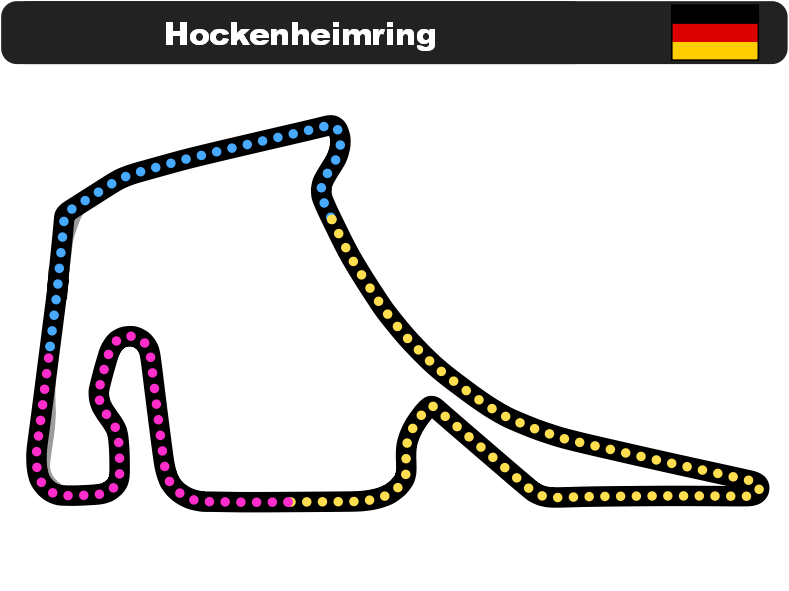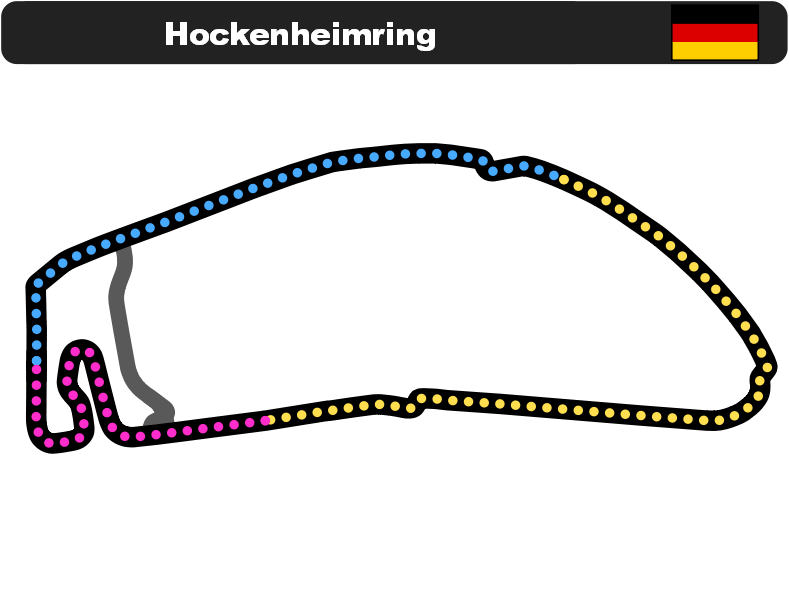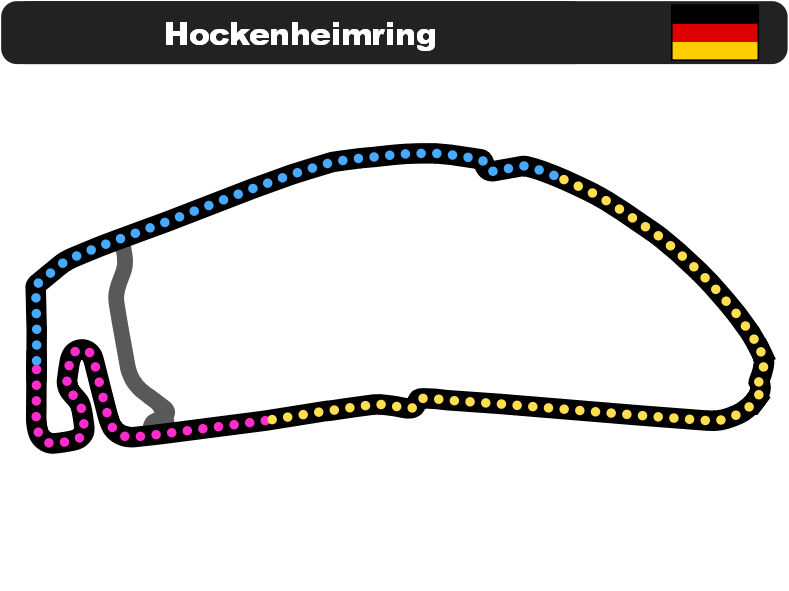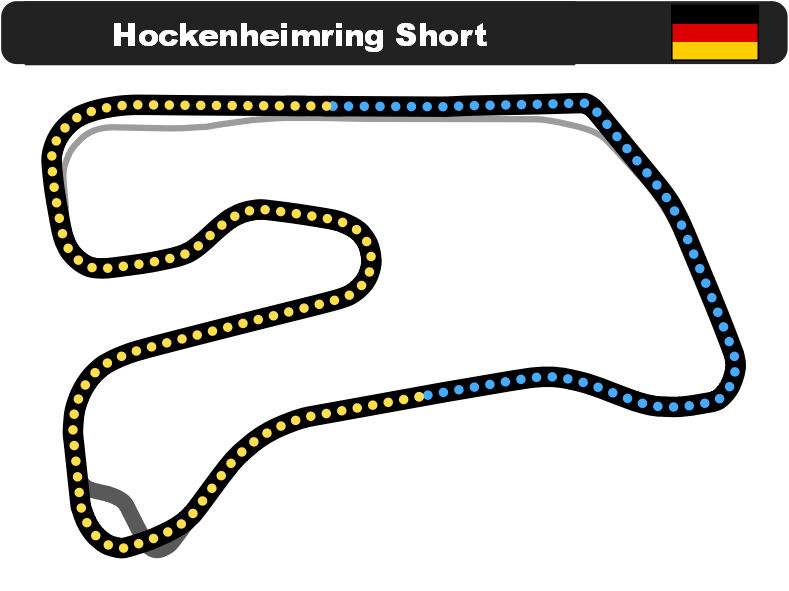Hockenheimring
 | |
 Country: Country: | Germany |
 Opened: Opened: | 1932 |
 | |
 Country: Country: | Germany |
 Opened: Opened: | 1932 |
 | |
 Country: Country: | Germany |
 Opened: Opened: | 1932 |
 | |
 Country: Country: | Germany |
 Opened: Opened: | 1932 |
The Hockenheimring opened on local roads in 1932 and was originally called the ‘Dreieckskurs’ (as the layout was broadly triangular-shaped). The circuit came about because a local timekeeper, Ernst Christ, pushed the idea for a racing circuit near his hometown.
Just before World War II, in 1938, the layout was shortened to include the fast loop through the forest which became synonymous with the track for the following 63 years.
After World War II, racing resumed I 1947 following repairs to the track, whilst a new name of ‘Kurpfalzring’ was adopted.
The construction of a new autobahn in 1965 forced another shortening of the circuit, which introduced the stadium complex and new start-finish straight, still present today. The new layout opened in 1966.
Outside of the stadium section, the run to and from the Ostcurve was essentially a flat-out drag through the forest, and with concerns over safety (Jim Clark was killed at the circuit in 1968) and hosting the German Grand Prix for the first time in 1970, two chicanes were added.
These became a permanent fixture over the following decades, and in 1982 another chicane was added just prior to the Ostkurve, whilst the first chicane was also tightened.
Another change to the pre-Ostkurve chicane was made in 1992, and two years later the final chicane, now named after the late Ayrton Senna, was also tightened in the wake of the Brazilian’s fatal F1 accident earlier that year.
The writing was on the wall for the long forest loop though, as it was long, fast and took cars away from spectator areas for long periods of time.
A Hermann-Tilke redesign opened in 2002 at a cost of €62 million, shaving 2.25 km off the total length, and the old track in the forest was ripped up. The circuit layout has remained unchanged since.
Hockenheimring touring car race winners
 AMG Mercedes-Benz C-Class …
AMG Mercedes-Benz C-Class …
Note: Data valid for period between 13th Apr 1986 and 8th Jun 2025

 Audi RS3 LMS TCR II
Audi RS3 LMS TCR II Hyundai Elantra N TCR
Hyundai Elantra N TCR Honda Civic Type-R FK7 TCR
Honda Civic Type-R FK7 TCR CUPRA Leon Competición TCR
CUPRA Leon Competición TCR Peugeot 308 TCR
Peugeot 308 TCR BMW M4 DTM
BMW M4 DTM Opel Astra TCR
Opel Astra TCR Alfa Romeo 155 V6 TI
Alfa Romeo 155 V6 TI Ford Sierra RS500 Cosworth
Ford Sierra RS500 Cosworth Volvo 240 Turbo
Volvo 240 Turbo